Results 591 to 600 of 12094
Thread: Anandtech News
-
06-28-11, 11:10 AM #591
Anandtech: OCZ RevoDrive 3 X2 (480GB) Preview: 200K IOPS & 1.5GB/s for $1699?
Although consumer SSDs are far from a mature technology, PCIe SSDs are even further behind on the growth curve. The upside is huge. As SandForce has already demonstrated with the right dataset a single SSD can nearly saturate the 6Gbps SATA bus. Rather than force OEMs into putting yet another very high bandwidth bus on the motherboard, SSD vendors everywhere (Intel included) turn their attention to PCIe as a solution to the problem.
The holy grail is a native PCIe solution. Recently Micron announced such a thing: the P320h. However the estimated price tag on the P320h could be in the $5000 - $10000 range depending on capacity.
Manufacturers in the consumer SSD space are attracted to PCIe solutions simply because margins are higher. For the most part, client storage is a commodity and if you don't make the NAND and controller going into an SSD you're not making a ton of money selling drives to end users. Sell to an enterprise customer and all of the sudden a couple thousand dollars per drive seems like a bargain.
OCZ started making PCIe SSDs the simplest way possible. Take a couple of SSDs, put them on a single PCB behind an on-board RAID controller and you're good to go. The single card performance was decent but of course there were issues. A single controller failure would take out the whole drive and things like TRIM weren't supported either.
Recently OCZ has been trying very hard to be more than just a rebrander of components. The acquisition of Indilinx puts a wedge between OCZ and a lot of its former peers in the memory business, but it's still a far cry from Intel or Samsung. Its latest PCIe SSD is another step in the maturing of the company. This is the RevoDrive 3 X2:Read on for our preview!
More...
-
06-28-11, 01:20 PM #592
Anandtech: Sony Updates Vaio Z: Light Peak and An External GPU
Sony has announced an updated Vaio Z lineup today. Vaio Z is Sony’s premium 13” laptop series which essentially packs performance of a 15” laptop into a smaller form factor. As expected, the updated lineup includes new Sandy Bridge CPUs but what really makes it interesting is the support for Light Peak and a BTO option for external Power Media Dock with a discrete GPU.
{gallery 1210}Sony Vaio Z specifications Standard Built-to-order options Screen 13.1" (anti-glare) N/A Resolution 1600x900 1920x1080 Processor Intel Core i5-2410M (2.3GHz, 3MB L3) i5-2540M (2.6GHz, 3MB L3), i7-2620M (2.7GHz, 4MB L3) Graphics Intel HD 3000 Power Media Dock with AMD 6650M Storage (SSD) 128GB 256GB, 512GB; 128GB, 256GB, 512GB (SATA 6Gb/s) Memory 4GB 1333MHz DDR3 8GB 1333MHz DDR3 Connectivity WiFi (802.11a/b/g/n), 3G, Bluetooth Wireless WAN Ports USB 2.0, docking station/USB 3.0, HDMI out N/A Battery Up to 7 hours Up to 14 hours (external) Dimensions(DxHxW) 8.3" x 0.66" x 13.0" N/A Weight 2.6lb N/A Price £1195 (~$1914) Varies
Unfortunately Sony has yet to update their USA page to include the updated Vaio Z. The European page has already been updated, thus the usage of pounds in the table. The Dollar pricing is an exact transfer of the VAT-less UK price but it gives us a hint that the standard Vaio could be around $1900 in the US. Sony's UK page says ships in 3-4 weeks so expect late July availability.
The new Vaio Z is significantly thinner and lighter than the old Vaio Z: It weighs in just 2.6lbs and has height of 0.66” compared to its 3.04lbs and 1.3” predecessor. It’s actually slightly thinner than the MacBook Air (0.66” vs 0.68”). MacBook Air’s design is slanted though so at its thinnest point, it’s much thinner than the new Vaio Z. Vaio Z is also quite noticeably lighter than 13” MacBook Air or Samsung 9 Series, which weigh 2.9lbs and 2.88lbs respectively.
The main reason why the new Vaio Z is so much lighter and thinner than its predecessor is the lack of a discrete GPU. It comes with Intel HD 3000 which is integrated into the CPU die, whereas the old Vaio Z came with a discrete NVIDIA GT 330M. However, Sony has provided an interesting solution to this. They have announced a Power Media Dock (PMD) which is basically a souped up external optical drive. The external dock has an AMD Radeon HD 6650M with 1GB of DDR3 in it as well. The AMD 6650M allows you to connect up to two displays to the PMD so you can have a total four displays: two attached to the PMD, one attached to the laptop’s HDMI port and obviously the laptop’s integrated LCD.
To make this worthwhile, Sony uses Intel’s Light Peak technology (yes, Sony calls it Light Peak, not Thunderbolt) which provides up to 10Gb/s of bandwidth in each direction. A GPU requires lots of bandwidth which is why USB, especially 2.0, is not suitable for powerful external GPUs. There are plenty of USB video adapters which are fundamentally external GPUs but they are not suitable for gaming or other GPU heavy tasks by any means. What makes Sony’s implementation different from Apple’s is the fact that Sony uses a combo-port that combines USB and Light Peak into one, instead of Mini DisplayPort connector like Apple. Sony actually calls the port a docking station/USB port. It can function as a regular USB 3.0 port as well.AMD 6650M specifications Shaders 480 GPU frequency 600MHz Memory 1GB DDR3 Memory frequency 900MHz Memory bus width 128-bit
The Power Media Dock comes in three flavors. The cheapest one is a normal DVD drive. The second option is a Blu-Ray player. The most expensive option is a Blu-Ray writer as you might have guessed. PMDs with Blu-Ray are only available from Sony’s online store whereas the DVD PMD will be available through resellers as well. The PMD supports up to two external monitors: one via HDMI and one via VGA. There is also a Gigabit Ethernet port, two USB 2.0 ports and one USB 3.0 port.
One issue with the PMD is its price. The cheapest one is £400 which translates to $640. Take away UK’s VAT which is 20% and we get $512, so the cheapest PMD will most likely retail for $500. That sounds pretty expensive, considering that AMD 6650M is an underclocked AMD 6570 (our review) which goes for around $70. Combine that with $20 DVD drive and you get what Sony calls Power Media Dock.
Then there's the concern about performance. Sony must be running PCIe over Light Peak, but you only get a maximum of 1.25GB/s of bandwidth to/from the GPU - assuming no additional overhead. While the 6650M is likely much faster than Sandy Bridge's intergrated GPU, it's potentially slower than an on-board 6650M would have been because of the Light Peak bottleneck.
Conclusions
Vaio Z is definitely the most portable of the current 13" ultraportables and it packs in a nice amount of power. However, its pricing makes it too expensive compared to most of its competitiors. 13" MacBook Air starts at $1199 so the cheapest Vaio Z will be at least $700 more expensive if UK's pricing is comparable to US's. Even the Lenovo X1 starts at $1199 nowadays and it features exactly the same CPUs. The biggest market for Vaio Z seems to be in the high-end ultraportable market. No other brand offers 512GB SSD or 1080p screen at the moment for example.
Power Media Dock sounds interesting but the price tag is everything else but attractive. For the same amount of money, you could grab for instance NVIDIA GTX 580 which is the fastest GPU as of today. With PMD, you will be limited to AMD 6650M which isn't exactly a great GPU for gaming in the first place. At $500, you would hope for something much, much better than a DVD+GPU combo that struggles to play games at decent quality. We have seen external GPUs before but they have always failed miserably. Sony's attempt doesn't seem too promising either but at least we now have a port that is capable of external GPUs: Thunderbolt/Light Peak. There is hope that third parties will release cheaper and faster solutions, the most promising being Sonnet's Echo Express, which supports full size PCIe cards (though no word on GPU support).
As the world becomes increasingly more mobile, external GPUs may be a solution to the problem of balancing portability with performance. Light Peak is a great way to get data out of a system however we may need to see a next-generation version of the interface, with higher bandwidth to really make sense for high performance external GPU solutions.
More...
-
06-29-11, 11:10 PM #593
Anandtech: ASRock A75 Extreme6 Review and Desktop Llano Overclocking
Our initial tests with the ASRock A75 Extreme6 were based on a pre-release model, and shown in our preview. At that point, the board design was not finalized and the BIOS was still quite raw, but the performance was essentially complete. However, now in my grasp is the full release version of the Extreme6. Alongside this standard motherboard review, and testing to see whether it's worth the $150 asking price, we're also going to take a good look at the overclocking features of the Desktop Llano chipset.
More...
-
06-30-11, 02:21 AM #594
Anandtech: The AMD A8-3850 Review: Llano on the Desktop
Ever since the arrival of Conroe back in 2006, we've only really recommended AMD for its (sometimes incredible) value. Recommending AMD for those looking for absolute performance pretty much ended when the Pentium 4 retired.
AMD is looking to change that with the arrival of its first Fusion APUs. These APUs marry one or more AMD x86 cores with dozens if not hundreds of Radeon "cores" on a single die. While today the APU is little more than a cohabitation of these two computing architectures, the end goal is something far more integrated:
Llano is AMD's second Fusion APU, the first being Zacate which we met earlier this year. Llano shouldn't be all that unfamiliar to you either, the notebook version of the APU launched just two weeks ago. Our conclusions were as you'd expect: sub-par x86 performance but competitive battery life and great gaming performance for a value notebook. If gaming is going to be the most intensive thing you do on your notebook, you may find yourself wanting one based on a Llano APU.
Now it's time to look at Llano on the desktop. Read on for our review of AMD's A8-3850!
More...
-
06-30-11, 05:30 AM #595
Anandtech: AMD A8-3850 : An HTPC Perspective
Today is all about Lynx, the desktop version of the Llano APU from AMD.
Anand is reviewing the A8-3850 from a generic PC perspective, and Ian is covering its overclocking aspects using an ASRock A75 Extreme6 motherboard. I will be handling it from an HTPC viewpoint. Ever since ATI got acquired by AMD, HTPC enthusiasts have waiting with bated breath for a CPU-GPU hybrid to come out.
Does the Lynx fulfil their expectations? Read on to find out!
More...
-
06-30-11, 01:40 PM #596
Anandtech: G.Skill Summer Memory Giveaway, Round 2: 16GB DDR3-2133 Kit
Congrats to AnandTech reader: awkward for winning G.Skill's 8GB DDR3-1600 memory kit in our last giveaway. Respond to my email to claim your prize! There's still one more chance to win memory, this time we've got a 16GB DDR3-2133 kit from G.Skill. The kit comes with four 4GB DDR3-2133 modules rated at 9-11-9-28 @ 1.65V. The four modules even come with their own fan cooling kit for the aggressive overclockers out there.
Read on for details on how to enter!
More...
-
06-30-11, 11:40 PM #597
Anandtech: HTC Sensation 4G Review - A Sensational Smartphone
I like what HTC has been up to lately. Rather than fighting a race to the bottom with endless soulless variants of the same piece of hardware in a crowded (and fiercely competitive) Android handset market, it’s trying to grow beyond just being a handset manufacturer. The combination of unique industrial design and (love it or hate it) custom software in the form of Sense are making HTC a force to be reckoned with.
We're taking a look at the latest and greatest HTC has to offer today with its first dual core smartphone, the HTC Sensation 4G.
More...
-
07-03-11, 10:50 PM #598
Anandtech: HTC Droid Incredible 2 Review
The original Droid Incredible by HTC was the second Android phone I ever officially reviewed. The first was Google's Nexus One. A year ago I proudly proclaimed that the Incredible was clearly better than the Nexus One thanks to the added features HTC delivered through Sense. Since then we've seen Google improve Android tremendously. The OS has come so far in the past twelve months that I do wish more vendors would actually ship unaltered versions of it on their devices. HTC has kept up with Google's evolution, at least on some of their devices. The Sensation 4G, EVO 3D and Flyer all ship with a brand new version of the Sense UI (3.0) that actually adds some pretty neat features to the OS (e.g. the ability to launch apps from the lock screen).
Unfortunately the successor to the original Incredible isn't blessed with Sense 3.0, it's still running version 2.0. The Incredible 2 also doesn't ship with Gingerbread, it's currently only available with Android 2.2.1. Qualcomm does have a working Gingerbread port, something HTC is quite familiar with as all of the devices I mentioned above ship with Gingerbread. The Incredible 2 is due for an update to Gingerbread soon but if you buy it today all you get is Froyo.
The seemingly dated software comes with similarly dated hardware, at least by today's standards. The Incredible 2 ships with Qualcomm's MSM8655 SoC. That's a 45nm SoC with a single-core 1GHz Snapdragon and an Adreno 205 GPU. The chip has 768MB of memory on package. CPU performance isn't improved compared to the original Incredible although the GPU is faster and power consumption is lower thanks to the 45nm process (the original Incredible had a 65nm QSD8650 with an Adreno 200).
Read on for our full review of the Droid Incredible 2!
More...
-
07-05-11, 10:10 AM #599
Anandtech: TI OMAP4 First to be Awarded Netflix HD DRM Certification
Last week, TI Invited me out to their Dallas, Texas headquarters as part of an editors day. There they showed and talked about a number of exciting projects, including their WiLink combo WLAN, GPS, BT, and FM solutions, MSP430 microprocessors, their C66x multicore DSP, and of course more information on OMAP5. If I had to pick a highlight however, it was being first to see Netflix HD playing back on a real live Android 2.3 device, in this case TI's Blaze development platform with an OMAP4430 SoC inside.
Back when Netflix brought an official playback client to Android, modders were quick to discover that playback could be enabled on unapproved devices simply by modifying build.prop. What it boiled down to was that you could enable Netflix playback on unapproved devices merely by masquerading as an approved one. Further, the list of approved devices didn't clearly delineate any specific SoC. At the time, this made things confusing - it seemed as though Netflix was not in fact using any hardware specific DRM. Turns out they really weren't.
There are two different levels of Netflix certification, and every device has to go through it individually. The first level is essentially a playback test - call it an anti-slideshow benchmark. If the device plays back SD Netflix streams with acceptable performance, the device passes, is certified, and thus granted access to SD streams. This is the level that devices on Android are at right now, and the reason why it's just a matter of masquerading as another to playback simple content. That's also why it works across so many different SoCs.
The second level is for HD content, Netflix's 'premium' level. Here, Netflix is forced to have a much more rigorous set of requirements so that it can fulfill contractual agreements with its content parners. To playback HD content, the entire end-to-end chain must be DRM-enabled, at no point in the playback datapath can the video stream be unprotected. That means decoded and uncompressed frames, audio, and device secrets must only exist in 'firewalled,' protected memory that the OS can't get access to, the decoder can only exist in a trusted execution environment, and HDCP must be used for the stream to be output over HDMI. Netflix obviously takes its HD content protection much more seriously so the entire 720p or 1080p H.264 video can't simply be dumped to an SD card by watching memory. What it boils down to is that Netflix requires Microsoft PlayReady DRM compliance across every tier of hardware before it will allow HD streams to playback.
TI does this on OMAP4 using everything under its M-Shield security porfolio, which is a combination of Trusted Logic's secure middleware component running in an ARM TrustZone (a feature common to all ARM Cortex-A class processors). In addition, that HD content can be output over HDMI to HDCP-compliant displays. Think a Roku box but in your pocket.
Last Friday when TI showed me the Blaze playing back 1080p Netflix content, it had only just begun the final stage of its certification. Though I wasn't allowed to take pictures or video, sadly, the Netflix client was otherwise identical to what's in the Android market right now, except with HD video. Video playback was buttery smooth and instantly locked onto the highest quality stream. I tested a number of different things in the catalog from 720p to 1080p, including the Netflix test videos, all of which played back without a hitch.
Things are wrapped up now, with OMAP4 now being granted a Netflix Silicon Reference Implementation (SRI) certification for Android 2.3. I asked the TI folks a bit more about how Netflix certifies devices, and learned that each handset still will undergo its own testing just to make sure each OEM's implementation works. In addition, that secure RAM protected memory is a statically allocated 8 MB, something it believes almost every OEM will have no problem going with.
The obvious first place for HD Netflix playback with HDMI out to show up is the upcoming Motorola Droid 3, which we've already shown includes an OMAP4 SoC. No doubt the handset will come with a compliant Netflix application preloaded should it leverage this certification.
I fully expect other SoC vendors make their respective announcements about being Netflix HD certified in due time. Qualcomm is probably next in line, as they already advertise both OMA DRM 2.1, TrustZone, and Microsoft WMDRM 10 compliance (which PlayReady is backwards compatible with) for MSM8x55 and MSM8x60, with the latter including HDCP. For now however, OMAP4 is the first to be able to enjoy HD Netflix content.
More...
-
07-05-11, 05:00 PM #600
Anandtech: Cooler Master's Storm Enforcer: The Not-So-Quiet Storm
It's a treat to get one of Cooler Master's enclosures in for review: they've been at it for a long time, and they have cases that cover virtually every price point on the market. They manufacture my personal favorite Micro-ATX budget enclosure, the Elite 360, an attractive $40 devil that makes for a fantastic budget HTPC case. They're also responsible for the crowd favorite enthusiast juggernaut, the Cosmos. What we have in today isn't the beast the Cosmos is, but it's not the pint size player the Elite 360 is either. From their Storm series of gaming cases we have the Enforcer. At an MSRP of $79 it lands right between our incumbent In-Win BUC and the budget ninja BitFenix Shinobi. Can it beat them both?

More...
Thread Information
Users Browsing this Thread
There are currently 20 users browsing this thread. (0 members and 20 guests)






 Quote
Quote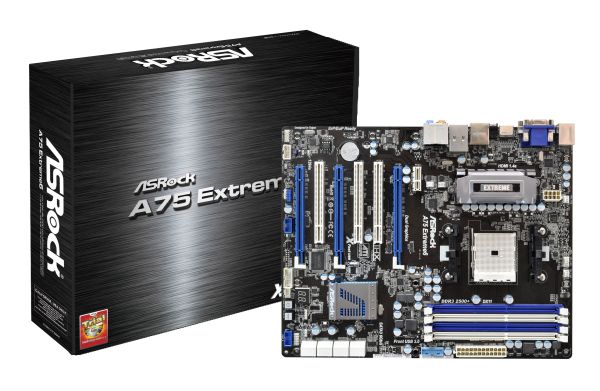
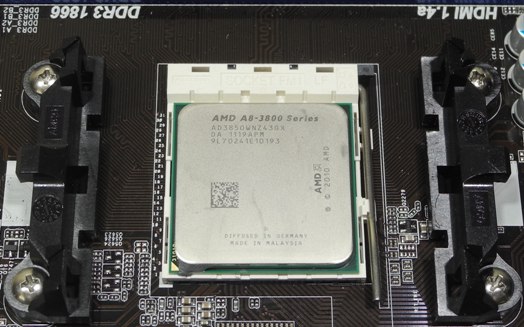
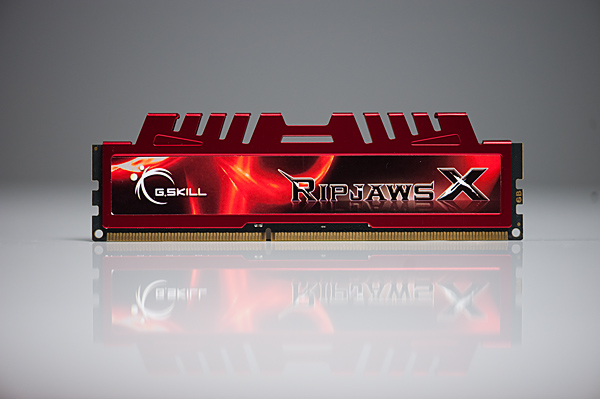
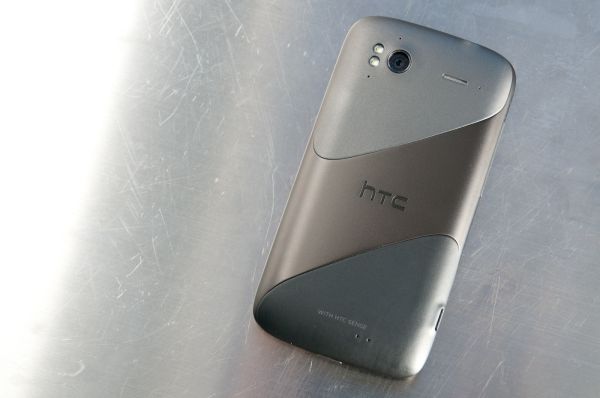

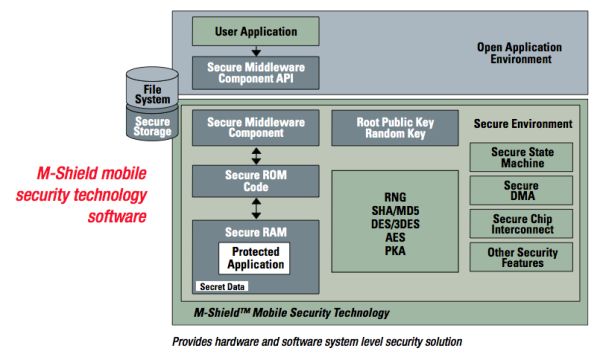
















Bookmarks